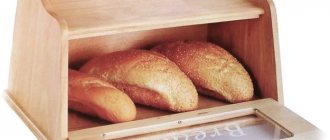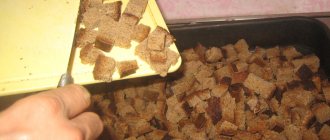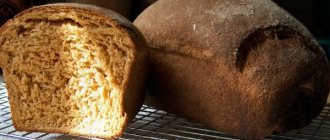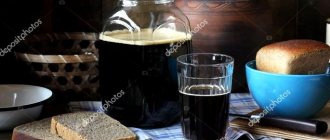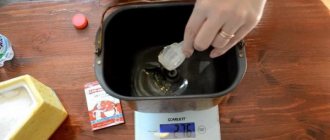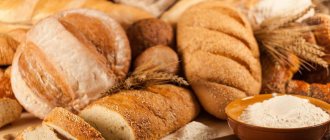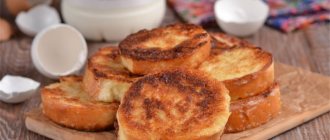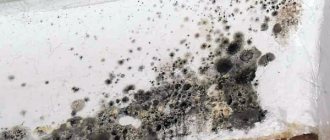Is it possible to get food poisoning from bread?
When people talk about bread poisoning, they mean intoxication due to spoiled, and not due to fresh, product. It is indeed possible to get poisoned by moldy bread: mycotoxins can be extremely dangerous. They cause respiratory problems, skin rashes, allergic reactions and other consequences.
Some believe that the appearance of a well-known fungus indicates a natural origin and the absence of preservatives. Alas, the naturalness and viability of mycelium are not strongly related. Why does mold appear on bread? The mechanism of infection is the contact of mold fungi on the surface of the product, which often happens after cooking, especially when it comes to baked goods. Fungal spores settle on the crusts of flour products during transportation, transfer, storage, or are transmitted through the hands of workers.
How is this intoxication characterized?
The symptoms of an intestinal disorder that occurs after eating low-quality loaves, booths, or loaves that have begun to deteriorate are no different from the signs of poisoning that begin due to other products. But only for mild and moderately severe poisoning. Severe intoxication has a whole set of specific symptoms:
- Hallucinations, both visual and auditory.
- Impairments in visual function, of any type, from defocus to the appearance of spots before the eyes.
- Dizziness.
- Delusional states, instantaneous appearance of any mania.
- Irresistible desire to sleep.
- Pre-fainting or loss of consciousness.
If you have these symptoms, you should immediately call a doctor at home.
Common signs of poisoning include:
- weakness;
- stomach pain;
- feeling of bloating;
- a distinct feeling of seething in the intestines and flatulence;
- nausea, either turning into vomiting or not;
- dizziness;
- frequent urge to have bowel movements;
- diarrhea.
In some cases, there is an increase in body temperature, a state of chills or fever, and sometimes, on the contrary, a loss of strength with a concomitant decrease in temperature to critical levels.
Is it possible to eat uninfected neighboring areas of bread?
When purchasing a new loaf, a fungal coating is sometimes discovered the very next day. It’s a shame to throw away a whole loaf of bread, so some people think that it’s acceptable to cut off the affected area and then eat the edges where there is no harmful fungus.
Doctors prohibit doing this, claiming that spores spread over fairly large distances without being seen. If only one area of a loaf or loaf is affected by plaque, you can be sure that the spores are on top of the entire product. This explains why doctors recommend throwing away the entire loaf rather than cutting off the affected area .
Once in the body, mold produces a mycotoxin, small amounts of which are truly harmless to health and are easily neutralized by the liver. With significant consumption of fungal-contaminated products, negative consequences will quickly appear: among them, infection of the respiratory tract, the ability to inhibit beneficial microflora.
If a person has eaten moldy bread once, it is enough to take sorbents. In case of regular (here you can use the term “chronic”) poisoning with moldy bread, you need to be wary of the following reactions:
- the appearance of problems with the liver: disruption of the functioning or structure of the organ, up to cirrhosis;
- signs of damage to the gastrointestinal tract caused by an abundance of mycotoxins;
- Mold toxins promote cell mutation, significantly increasing the likelihood of malignant formations.
Mild manifestations are common after mold enters the body: unexpected allergic reactions, breathing problems, sudden dermatitis. With regular poisoning, the severity of such pathologies increases, up to anaphylactic shock or Quincke's edema. People with a tendency to allergic reactions should definitely throw away a spoiled loaf.
In the ratio of harm and benefit from consuming mold, the harm always outweighs. One of the positive aspects is the ability of mold fungi to produce a substance with an antibacterial effect, which is comparable to pharmaceutical antibiotics. Actually, this is where the positive aspects end. So if you need to take a course of penicillin, go to a good doctor, not a bad baker.
Time lapse from YouYube channel Movie Vertigo
If you eat something moldy, you need to look for an antidote.
Enterosorbents, as a rule, are safe and are quickly eliminated from the body along with toxins, without reducing the fluid content. Until recently, wood derivatives were mainly used - activated carbon, lignin-based preparations - polyphepane and cellulose. Their effectiveness reduces “promiscuity” - they remove everything from the body, including vitamins and beneficial microelements.
odorless and tasteless drug Enterosgel The gel is stirred in water or chewed and washed down with water at the rate of 1 tablespoon per 0.5-1 glass of water. Course – 3-10 days.
Polysorb is similar , 1 packet of which contains 1 teaspoon of enterosorbent. This single dose is poured into 100 ml of water and drunk 1 hour before meals. The course is 3-5 days, taken only in the form of an aqueous suspension (so as not to accidentally inhale the drug if you pour it on the tongue).
Carbon-mineral enterosorobent Ecoflor not only collects toxins, but also restores beneficial intestinal microflora, since it contains bifidobacteria and lactobacilli. It is taken 2-3 times a day 10-15 minutes before meals with a small amount of water (30 ml) for 5-14 days. The package contains 5 g of the drug, that is, a single dose.
A very interesting drug, Rekitsen, is based on wheat bran fermented with wine yeast. Entering the intestines, recicene binds toxic substances and at the same time enriches the body with dietary fiber, amino acids, enzymes and pectins. Dosage – 1 tbsp. spoon three times a day, course - at least 4 weeks.
The most dangerous types of mold
There are several types of fungus, distinguished by color:
- Blue-green, black mold . A common species, typical of food damage. Loves warm and humid environments.
- Pink . It is not very dangerous, but it is still a weak poison. Develops due to the presence of pathological grains in wheat.
- White . Hazardous to health. It also often appears on cheese and also affects wooden work surfaces.
- Gray . The most toxic species that seriously threatens human health: it can cause anaphylactic shock and the central nervous system. Can develop in any environmental conditions. Affects the entire product evenly.
How to keep food fresh and prevent wild mold growth?
- Clean out the refrigerator! Once a month, do a thorough cleaning of your refrigerator. Wash the shelves well, wipe dry and throw away any questionable products.
- Check your cleaning products. There is no point in cleaning the refrigerator or kitchen surfaces with an old sponge or special napkins. They also require regular replacement.
- Don't buy too much food. It may seem tempting to make huge grocery purchases for the month, especially vegetables, fruits, berries, and dairy products, but it is better not to abuse this. This reduces the risk of moldy unused food.
- Check your food containers. We often store leftover prepared food in plastic containers. Read carefully our material “6 mistakes you can make when using leftover prepared food” (see here ). And pay attention to the quality of the inner surface of the containers. It should be smooth, without cuts - they are a breeding ground for mold and bacteria.
- Use the power of cold. Don't plan to eat ready-made food right away? Place it in the freezer for better and safer storage.
FROM THE EDITOR! In the fight against mold, actively use the superpowers of phytoncides. These are biologically active substances secreted by plants that kill or suppress the growth and development of pathogenic bacteria. The phytoncides of onion, garlic and mustard most strongly suppress the development of mold and bacteria. It is easiest to work with dry mustard, since its volatile substances are more stable. To do this, pour it into linen bags, place it at the bottom of boxes for vegetables and fruits or on shelves in the refrigerator. In the same way, you can use phytoncides of horseradish, radish, citrus fruits and fresh ginger.
Symptoms of poisoning
Mold is dangerous both when ingested and when its spores are inhaled for a long time. They are so small that it is impossible to notice them. A person does not understand what surfaces or products have fungi on them. If you find a contaminated surface on your bread, it is recommended that you throw out all the contents from the bread bin and then wash the inside of it .
The severity of clinical manifestations depends on the duration of inhalation of mold spores, as well as their concentration on the product. Instant action occurs when toxins enter the respiratory tract. Common symptoms of bread poisoning may include:
- nausea, vomiting;
- stool disorder;
- lacrimation with rhinitis;
- dermatitis;
- stomach pain;
- sudden cough.
When consumed orally, signs of poisoning appear within 2 days. A special risk group is the elderly, children, and pregnant women.
" Drunk " is the name given to bread that was made from contaminated grain. Fusarium as a disease of cereals has not yet been sufficiently studied. Externally, the pathology manifests itself as a pinkish coating, due to which the grain becomes underdeveloped and loses quality. Poisoning with drunken bread is especially dangerous, because the toxin causes not only digestive upset, but also mental disorders. The clinical picture is similar to alcohol intoxication with the addition of gastrointestinal pathologies.
Is it possible to use moldy bread in the garden?
Flour products damaged by mold can be used in the garden. It's no secret that bread is prepared with yeast and it is their content that has a great effect on plant growth.
I offer a recipe for plant food prepared with flour products. For this you will need
- a bucket of picked green nettles,
- 2 kilograms of sugar or old jam or compote,
- 1 tablespoon yeast
- 5 kilograms of spoiled bread.
Next, grind all the ingredients, put them in a barrel and fill them with 10 buckets of warm water. Place the container in a warm place, let it brew for 2 weeks, stir occasionally, the solution can be considered ready when all the components settle down. This fertilizer perfectly stimulates the growth of garden plants such as pumpkins, cucumbers, peppers, tomatoes and eggplants.
You will see the results of treatment with such a healing solution in 10 days, the stems will become fleshy and richly green, the plants will take on a healthy appearance.
Here is a recipe without the intervention of green plants. To prepare, place pieces of moldy bread in a container and fill with warm water, covering the top with a press. Place the container in a warm place and let it sit for 14 days, then the resulting solution is mixed with water in a ratio of 1:1. This liquid stimulates the growth, fruiting and development of plants.
Bread is the most important product in human nutrition. It contains a large number of vitamins, minerals and trace elements important for people, necessary for the normal functioning of the human body. Therefore, when buying loaves or buns in a store, always consider your capabilities and do not buy large quantities of them for future use to prevent them from being damaged in the future. And then it will only benefit you.
What to do if you are poisoned by bread?
It is very important to understand that there is no benefit from eating mold, so you need to try to prevent intoxication, and not fight it after the fact. Measures to prevent food poisoning include compliance with storage rules and expiration dates, as well as careful inspection of food before consumption in order to notice changes in quality in time.
If you suspect food poisoning, there is no need to treat it yourself. Call a doctor, especially for a child. At home, before doctors arrive, you are allowed to take over-the-counter medications from the group of sorbents. The sooner you do this, the fewer toxins will have time to enter the bloodstream and spread throughout the body.
Symptoms of mold poisoning can be observed in the respiratory system or in the form of allergic reactions. If spoiled bread has been eaten recently, it is recommended to cleanse the stomach with a solution of potassium permanganate or plain water. It is important to prevent the onset of serious allergic reactions, especially anaphylactic shock. If you suspect hypersensitivity, it is better to immediately take an antihistamine.
Patients with a serious condition are hospitalized in a hospital, where toxins are removed using IVs. Additional therapy may include antiemetics, antifungals, and dietary supplements.
If you don’t know whether the mold on the bread you have at home is dangerous, it’s better to protect your health and throw away the suspicious product. I hope we have answered the question of whether mold is harmful. Active fungal growth is not observed on a fresh loaf, so the appearance of mold is clearly interpreted as a deviation from the norm.
Precautionary measures
Following simple rules will allow you to avoid poisoning from moldy bread:
- It is advisable to buy bakery products in well-established retail outlets; it is better if the product is manufactured by a large bakery,
- It is advisable not to buy bread packaged in film - it creates ideal conditions for the development of mold (high temperature and humidity),
- You should only purchase bakery products whose packaging indicates the production time, expiration date, information about the manufacturer, composition, and product certification information. The composition of the loaf will tell you about the use of harmful additives - L-ascorbic acid (E300) speeds up the proofing time, L-cysteine (E920) improves the structure of the dough, sulfur dioxide (E220) slows down the growth of mold, which often indicates the addition of the remains of an old moldy loaf,
- You shouldn’t buy bread in reserve,
- It is better to store the loaf in a bread box, preferably a wooden one.
Don't try to save moldy bread
Scientists bacteriologists recommend discarding the entire loaf of bread if it has mold.
Although you may only see a few spots of the fungus, its microscopic roots can quickly spread through porous bread. So don't try to scrape off the mold or salvage the remains of the loaf.
Some molds can produce harmful and invisible poisons called mycotoxins. They can spread through bread, especially if mold growth is strong.
High intake of mycotoxins can cause digestive upset or other illnesses. These toxins can also make animals sick, so don't feed your pets contaminated bread.
In addition, mycotoxins can negatively impact your gut health, possibly by changing the composition of the microbes that inhabit the gut ().
In addition, long-term and severe exposure to certain mycotoxins, including aflatoxin produced by some Aspergillus species, has been associated with an increased risk of cancer ().
It is recommended to discard the entire loaf of bread if it develops mold, as mold roots can quickly spread into your bread. Additionally, some types of mushrooms produce harmful toxins.
